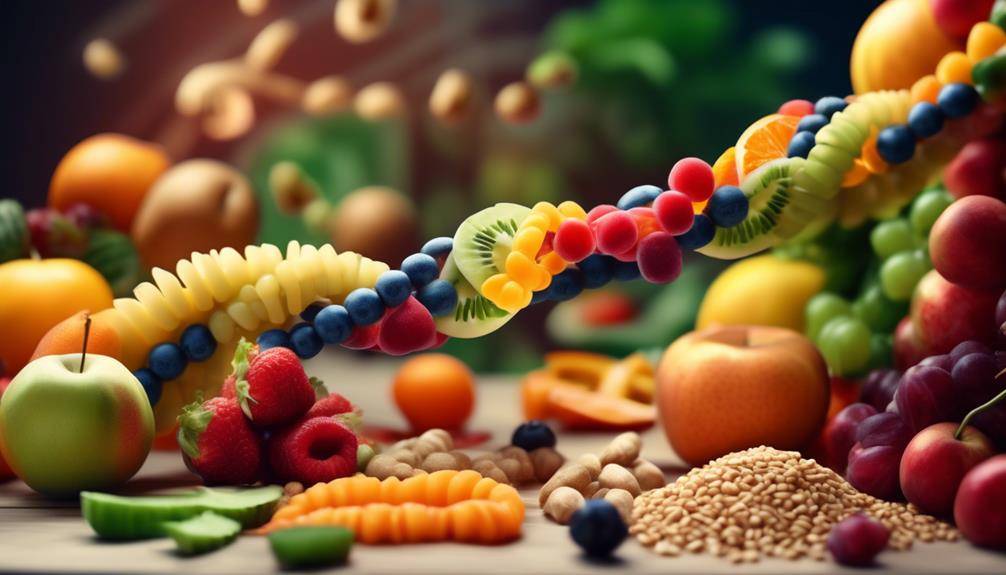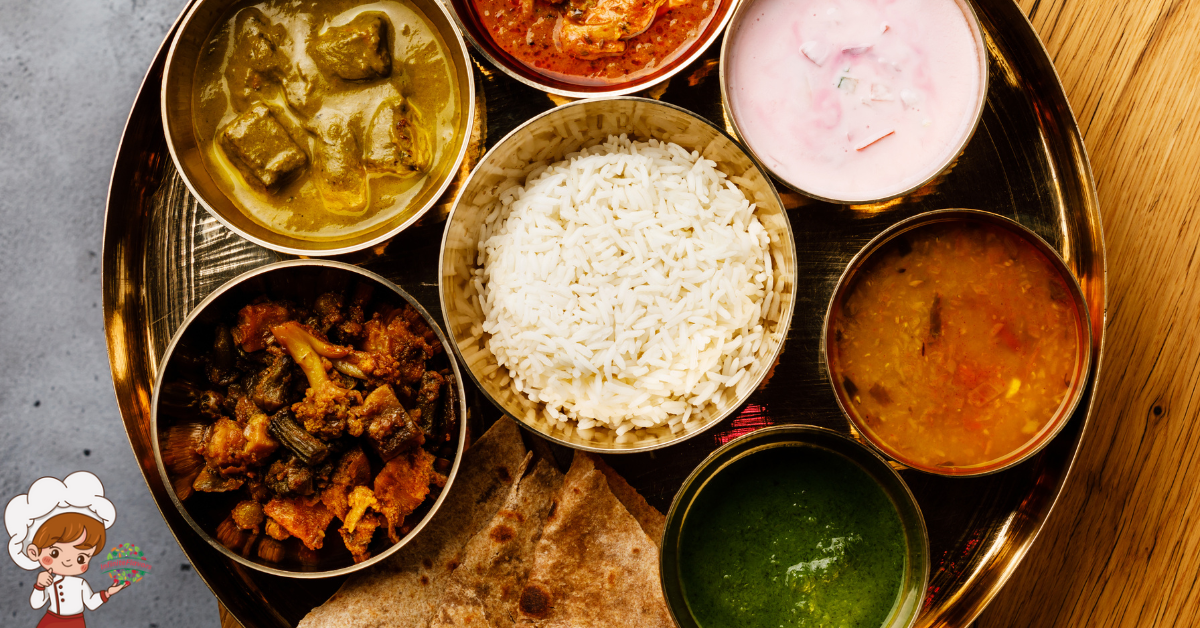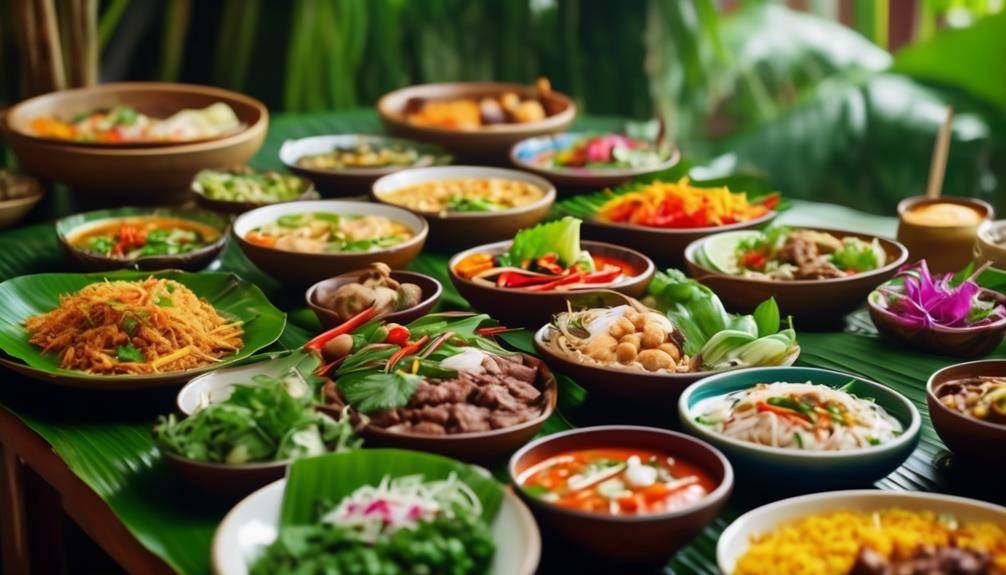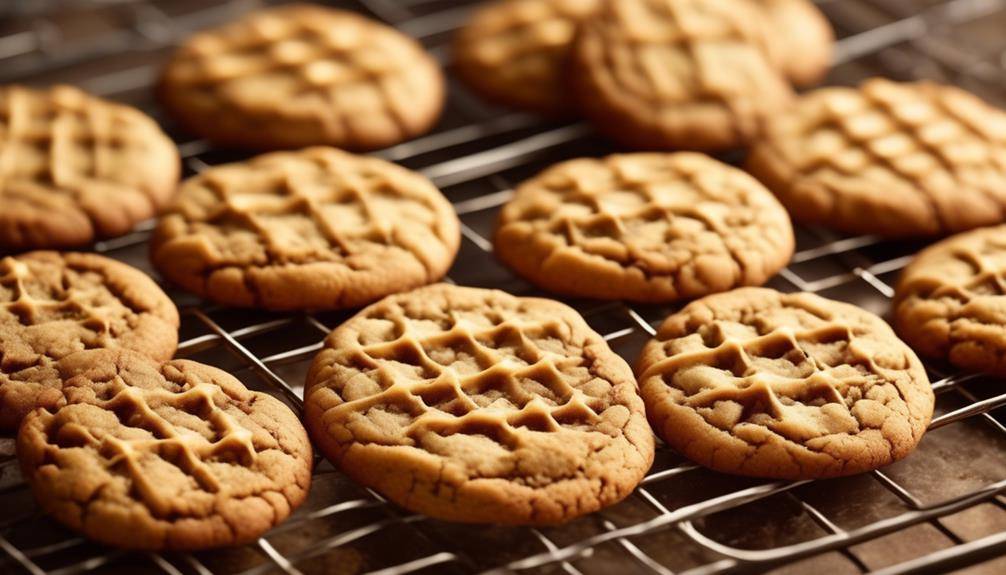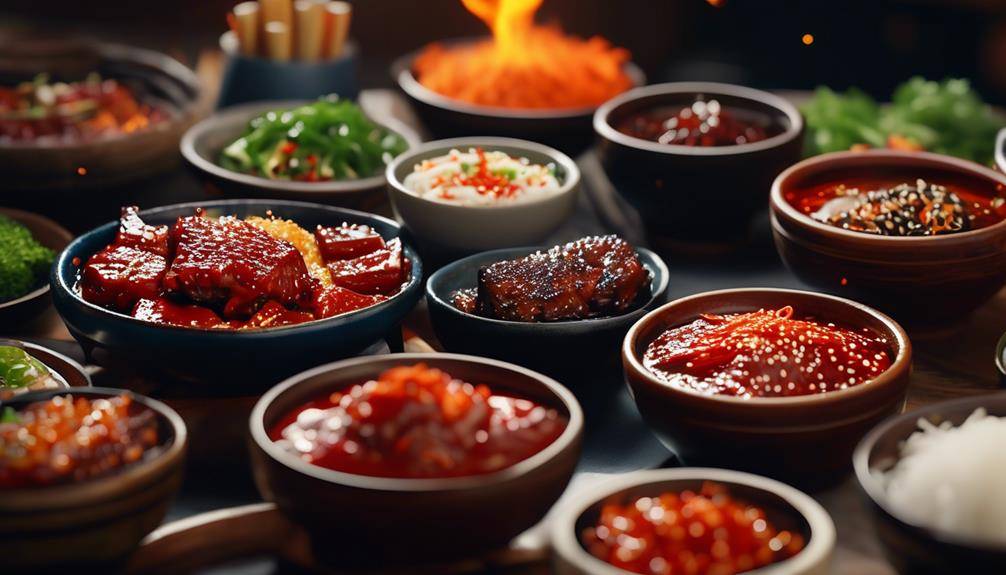The Best French Cuisine For Beginners

The Best French Cuisine For Beginners; Have you ever wondered how to recreate the mouthwatering flavors of a classic French dish right in your own kitchen? Picture this: a perfectly seared steak au poivre, served with a rich and velvety red wine reduction. The aroma fills the room and your taste buds are tingling with anticipation. If you’re ready to embark on a culinary adventure and discover the art of French cuisine, then look no further. In this discussion, we will explore the essential ingredients, basic techniques, and tantalizing dishes that will transport you to the heart of France. Get ready to elevate your cooking skills and impress your family and friends with the magic of French cuisine.
Essential French Ingredients
To begin your culinary journey into French cuisine, it is essential to familiarize yourself with the foundational ingredients that form the backbone of this renowned culinary tradition. French cuisine is known for its use of fresh, high-quality ingredients that elevate dishes to new levels of sophistication and flavor. While there are traditional ingredients that are commonly used in French cooking, it is also important to be aware of potential substitutions that can be made in case certain ingredients are not readily available.
One of the key aspects of French cuisine is its focus on using seasonal produce. From vibrant fruits and vegetables to herbs and spices, French cooking celebrates the natural flavors of each ingredient. Some staple ingredients include shallots, garlic, thyme, rosemary, and bay leaves, which add depth and complexity to dishes. If you are unable to find these specific ingredients, you can substitute them with onions, regular garlic, dried herbs, or other aromatic ingredients that are readily available.
In addition to ingredients, having the right tools and equipment is crucial for successful French cooking. A sharp chef’s knife, a sturdy cutting board, and a reliable set of pots and pans are essential. French cooking also often requires specialized tools such as a mandoline for thinly slicing vegetables, a mortar and pestle for grinding herbs and spices, and a pastry brush for glazing pastries.
Basic French Cooking Techniques
Now that you’ve familiarized yourself with the essential ingredients of French cuisine, it’s time to sharpen your knife skills and learn the art of sautéing. Mastering the proper techniques for slicing, dicing, and chopping will not only enhance your cooking precision but also elevate the presentation of your dishes. Additionally, understanding the nuances of sautéing, from controlling the heat to achieving the perfect caramelization, will give your French dishes that distinct flavor and texture they are known for. So, let’s roll up our sleeves and embark on this culinary journey of mastering basic French cooking techniques.
Knife Skills
Are you ready to master the art of knife skills, an essential component of basic French cooking techniques? Knife safety is of utmost importance when it comes to handling sharp objects in the kitchen. Always hold the knife by the handle, keeping your fingers away from the blade. Make sure the cutting surface is stable and secure to avoid accidents. Additionally, proper knife maintenance is crucial for optimal performance.
Sharpen your knives regularly to ensure they stay sharp and efficient. Use a honing steel to realign the blade’s edge and remove any burrs. Remember to wash and dry your knives by hand, as they are not dishwasher safe. By following these knife safety and maintenance practices, you will be well-equipped to handle any culinary task with finesse.
Sautéing Techniques
Having mastered the art of knife skills, you are now ready to explore the intricate techniques of sautéing, an essential component of basic French cooking. Sautéing involves cooking food quickly in a small amount of oil or fat over high heat. This method allows for the development of complex flavors and textures while retaining the natural goodness of the ingredients. To take your sautéing skills to the next level, consider these advanced techniques:
- Deglazing: Adding liquid to the hot pan after sautéing to create a flavorful sauce.
- Pan-flipping: Tossing the ingredients in the pan using a quick flick of the wrist, ensuring even cooking.
- Butter basting: Spooning melted butter over the cooking ingredients to enhance taste and texture.
- Sautéing en papillote: Cooking food in a parchment paper pouch, preserving moisture and intensifying flavors.
In addition to its culinary benefits, sautéing also offers health benefits, as it requires minimal fat and retains the nutrients of the ingredients.
Classic French Soups
Now that you’ve mastered the basic French cooking techniques, it’s time to explore the world of classic French soups. Traditional French recipes have been passed down for generations, each with its own unique flavor profile and ingredients. From the hearty and comforting onion soup to the delicate and elegant vichyssoise, French soups offer a wide range of flavors and textures to satisfy any palate. Get ready to embark on a culinary journey through the popular variations of French soups and discover the rich tradition and exquisite taste of French cuisine.
Traditional French Recipes
To embark on your journey into the realm of traditional French cuisine, let us delve into the exquisite world of classic French soups. These soups are a testament to the rich culinary history of France and are often enjoyed as a comforting and nourishing meal. Here are four iconic French soup recipes that will transport you to the heart of French gastronomy:
- French Onion Soup: Made with caramelized onions, beef broth, and topped with melted cheese and toasted traditional French bread, this soup is a true classic.
- Potage Parmentier: This simple yet delicious soup features leeks, potatoes, and cream, creating a creamy and velvety texture that is perfect for a chilly day.
- Bouillabaisse: Hailing from the coastal region of Marseille, this seafood soup is brimming with fresh fish, shellfish, and aromatic herbs, offering a taste of the Mediterranean.
- Vichyssoise: A cold potato and leek soup, Vichyssoise is a refreshing option during the summer months, and its smooth and creamy consistency makes it an elegant choice for any occasion.
Indulge in these classic French soups and experience the flavors that have delighted palates for centuries.
Popular French Soup Variations
Embark on a culinary exploration of popular French soup variations, as we delve further into the diverse and delectable world of classic French soups. Classic French soup recipes are highly regarded for their rich flavors and comforting textures.
Each region in France boasts its own unique soup variations, showcasing the country’s rich culinary heritage. From the hearty and robust Bouillabaisse of Marseille, made with a medley of fresh seafood and aromatic herbs, to the delicate and creamy Vichyssoise of the northern regions, consisting of leeks, potatoes, and cream, there is a French soup to suit every palate. Other regional French soup variations include the rustic Onion Soup from Lyon, the aromatic and earthy Pistou Soup from Provence, and the hearty and satisfying Cassoulet Soup from Toulouse. These classic French soups are not only delicious but also a testament to the country’s gastronomic excellence.
Popular French Appetizers
Indulge in the exquisite flavors of France with a delectable selection of popular French appetizers. These savory bites are the perfect way to start your culinary journey through France. Let your taste buds explore the rich and diverse flavors that French cuisine has to offer. Here are four must-try appetizers that will transport you to the streets of Paris:
- Escargots de Bourgogne: These tender snails cooked in garlic butter are a classic French delicacy. The snails are carefully cleaned and cooked to perfection, then served in their shells with a generous drizzle of garlic butter. Pair them with a crisp white wine from the Burgundy region to elevate the flavors.
- Charcuterie Platter: Experience the art of French cheese tasting with a charcuterie platter. This assortment of cured meats, pâtés, and terrines is accompanied by a selection of artisanal French cheeses. From creamy Brie to tangy Roquefort, each cheese has a unique flavor profile. Pair this indulgent platter with a glass of red wine from Bordeaux for a truly authentic experience.
- Foie Gras: Known for its rich and buttery texture, foie gras is a delicacy that has been enjoyed in France for centuries. This luxurious appetizer is made from the liver of a fattened duck or goose, which is then cooked and served with a sweet fruit compote. Pair it with a glass of Sauternes, a sweet white wine from the Bordeaux region, to balance the richness.
- Quiche Lorraine: This classic French dish is a savory tart filled with a creamy custard made from eggs, cream, and bacon. The combination of flavors is simply irresistible. Enjoy a slice of Quiche Lorraine with a glass of crisp Champagne to enhance the taste.
These popular French appetizers are just a glimpse into the world of French cuisine. Prepare to be enchanted by the flavors and traditions that make French food so beloved around the globe. Bon appétit!
Traditional French Main Courses
Discover the artistry and depth of flavor found in traditional French main courses. These dishes are a testament to the rich culinary heritage of France, showcasing the expertise and creativity of French chefs. From Coq au Vin to Bouillabaisse, each main course is carefully crafted to tantalize your taste buds and transport you to the picturesque French countryside.
One iconic main course in French cuisine is Boeuf Bourguignon. This hearty beef stew is braised in red wine, typically from the Burgundy region, and flavored with aromatic herbs, onions, and mushrooms. The slow cooking process allows the flavors to meld together, creating a rich and succulent dish that is perfect for chilly evenings.
Another must-try main course is Cassoulet, a rustic and comforting dish originating from the south of France. This slow-cooked casserole features white beans, duck confit, pork sausages, and sometimes lamb, all simmered in a flavorful broth. The result is a dish that is both hearty and satisfying, showcasing the diverse flavors and textures of the ingredients.
To complete your traditional French main course experience, make sure to save room for the exquisite traditional French desserts. Delicacies such as Crème Brûlée, Tarte Tatin, and Profiteroles are just a few examples of the delectable treats that await you. These desserts are known for their elegance and finesse, often featuring rich creams, caramelized sugar, and flaky pastry.
No French meal would be complete without a well-paired wine. France is renowned for its wine regions, each offering unique and exceptional varieties. From the prestigious Bordeaux to the elegant Burgundy and the vibrant Rhône Valley, there is a French wine to complement every main course and enhance your dining experience.
Explore the world of traditional French main courses, savor the flavors, and immerse yourself in the culinary wonders that France has to offer. Bon appétit!
Decadent French Desserts
Immerse yourself in a world of culinary elegance as you explore the realm of decadent French desserts. From delicate pastries to rich, velvety chocolate creations, French desserts are renowned for their exquisite flavors and impeccable presentation. Mastering the art of French dessert recipes requires a deep understanding of traditional techniques and a dedication to perfection. Here are four essential aspects of French pastry techniques that will help you create decadent desserts that will impress even the most discerning palates:
- Meticulous Patisserie: French pastry techniques emphasize precision and attention to detail. From measuring ingredients with precision to mastering the art of tempering chocolate, every step is crucial in achieving flawless results.
- Classic Flavors with a Twist: French desserts often feature classic flavors like vanilla, chocolate, and fruit, but they are presented in innovative and unexpected ways. Think of a classic tarte tatin with a modern twist or a traditional crème brûlée infused with lavender.
- Layers of Flavor and Texture: French desserts are known for their complex layers of flavor and texture. From the crispness of a perfectly caramelized macaron to the smoothness of a silky chocolate mousse, each bite is a symphony of taste and texture.
- Artistic Presentation: French desserts are not only delicious but also visually stunning. The presentation of a dessert is just as important as its taste. From delicate sugar decorations to elegant plating techniques, French pastry chefs take great pride in creating desserts that are as beautiful as they are delicious.
French Cheese and Wine Pairings
As you continue your culinary journey through the world of French cuisine, the next stop on your exploration is the captivating realm of French Cheese and Wine Pairings. French cheese tasting is an art form that brings together the rich and diverse flavors of the country’s renowned cheeses with the perfect complement of wine. Whether you are planning a wine and cheese party or simply want to elevate your cheese board at home, understanding the fundamentals of pairing these two delicacies will enhance your gastronomic experience.
To begin, it is important to consider the characteristics of the cheese and the wine. The intensity, texture, and flavor profiles of both elements should harmonize rather than overpower each other. For example, a creamy and mild Brie pairs beautifully with a light and fruity white wine such as a Sauvignon Blanc. The smoothness of the cheese is complemented by the crisp acidity of the wine, creating a harmonious balance on the palate.
Another classic pairing is a robust blue cheese, like Roquefort, with a sweet and fortified wine like Port. The salty and pungent notes of the cheese are beautifully offset by the richness and sweetness of the wine. This combination creates a taste sensation that lingers on your taste buds, leaving you craving for more.
When hosting a wine and cheese party, consider offering a variety of cheeses and wines to cater to different tastes. Arrange a selection of soft, aged, and blue cheeses along with a range of red, white, and dessert wines. Encourage your guests to experiment and discover their own favorite pairings.
French cheese and wine pairings are a delightful way to experience the complexity and depth of flavors that French cuisine has to offer. So, raise your glass and savor the unique combinations that will transport you to the heart of France’s culinary traditions.
French Baking and Pastry Basics
To master the art of French baking and pastry, one must first understand the fundamental techniques and ingredients that form the foundation of these exquisite culinary creations. French pastry techniques are known for their precision and attention to detail, resulting in delicate pastries that are a treat for both the eyes and the palate. Here are some essential techniques and equipment that you need to know when delving into the world of French baking and pastry:
- Pâte Brisée: This is a basic French pastry dough that is used for savory tarts and quiches. It is made by combining flour, butter, salt, and water, and is known for its flaky texture.
- Pâte à Choux: This versatile dough is used to make cream puffs, éclairs, and profiteroles. It is made by cooking flour, butter, water, and eggs together to create a dough that puffs up when baked.
- Meringue: Meringue is made by beating egg whites and sugar until stiff peaks form. It is used to add lightness and sweetness to desserts like pavlovas and macarons.
- Puff Pastry: Puff pastry is a laminated dough that is made by layering butter between thin layers of dough. It is used to create flaky pastries such as croissants and palmiers.
When it comes to French baking, having the right equipment is essential. Here are some key tools that every aspiring French baker should have:
- Rolling Pin: A French rolling pin, with tapered ends, is ideal for rolling out dough to the desired thickness.
- Pastry Brush: This brush is used to brush egg washes or glazes onto pastries for a golden and shiny finish.
- Pastry Cutter: A pastry cutter is used to cut butter into flour when making dough, ensuring a flaky texture.
- Silicone Baking Mat: This non-stick mat is perfect for baking delicate pastries and helps to ensure even baking.
Mastering French Sauces
Now that you have familiarized yourself with the essential techniques and equipment of French baking and pastry, it is time to elevate your culinary repertoire by mastering the art of French sauces. As you continue your journey into the world of French cuisine, mastering classic French desserts is just the beginning. To truly immerse yourself in the rich flavors and traditions of this renowned culinary culture, it is essential to explore the vast array of regional French sauces.
In France, sauces are considered the backbone of a dish, adding depth, complexity, and a harmonious balance of flavors. From the velvety smoothness of Béchamel to the rich and indulgent Hollandaise, each sauce has its own distinct characteristics and culinary applications. By mastering these classic sauces, you will be able to transform simple ingredients into elegant and sophisticated dishes.
As you delve into the world of French sauces, you will discover that each region has its own unique repertoire of sauces. From the butter-based sauces of Normandy to the herb-infused sauces of Provence, each region showcases its own culinary heritage through its sauces. By exploring these regional French sauces, you will gain a deeper understanding of the diverse flavors and ingredients that define French cuisine.
To master French sauces, it is important to understand the fundamental techniques and principles behind them. From creating a roux to emulsifying a sauce, each step requires precision and attention to detail. By practicing these techniques and experimenting with different flavor combinations, you will soon become adept at creating sauces that elevate your dishes to new heights.
Frequently Asked Questions: The Best French Cuisine For Beginners
What Are Some Common Substitutes for French Ingredients That May Be Difficult to Find?
If you’re struggling to find certain French ingredients, fear not! There are plenty of common substitutes that can work just as well. From herbs to cheeses, you’ll have no trouble creating delicious and easy French recipes for beginners.
Can You Provide a Step-By-Step Guide on How to Make a Classic French Soufflé?
To make a classic French soufflé, start by preheating the oven and preparing your ingredients. Separate the egg whites and yolks, then whip the whites to stiff peaks. Gently fold in the yolks and other ingredients, then bake until puffed and golden. Enjoy!
Are There Any Vegetarian Options for Popular French Appetizers?
For vegetarian options, popular French appetizers can be easily adapted. Replace meat with ingredients like mushrooms or artichokes, and use vegetable broth instead of meat stock. Embrace the rich flavors of French cuisine with these delicious substitutes.
What Are Some Traditional French Main Courses That Are Suitable for Special Occasions?
For special occasions, traditional French main courses like coq au vin and beef bourguignon are perfect choices. These dishes showcase the rich flavors and techniques of French cuisine and are sure to impress your guests.
Could You Recommend Some Specific French Wines That Pair Well With Different Types of Cheese?
When it comes to French wine and cheese pairings, there are a few tips to keep in mind. For soft, creamy cheeses, try a Chardonnay or a Pinot Noir. For hard, aged cheeses, opt for a Bordeaux or a Cabernet Sauvignon. Experiment and find what you enjoy!
Conclusion
In conclusion, French cuisine is a culinary art form that encompasses a rich history of ingredients, techniques, and flavors. From the essential ingredients that form the foundation of French cooking to the mastery of sauces and the decadence of desserts, this article has provided a glimpse into the world of French gastronomy. By exploring these beginner-friendly recipes and tips, readers can embark on a culinary adventure that will not only delight their taste buds but also deepen their appreciation for the elegance and sophistication of French cuisine.



